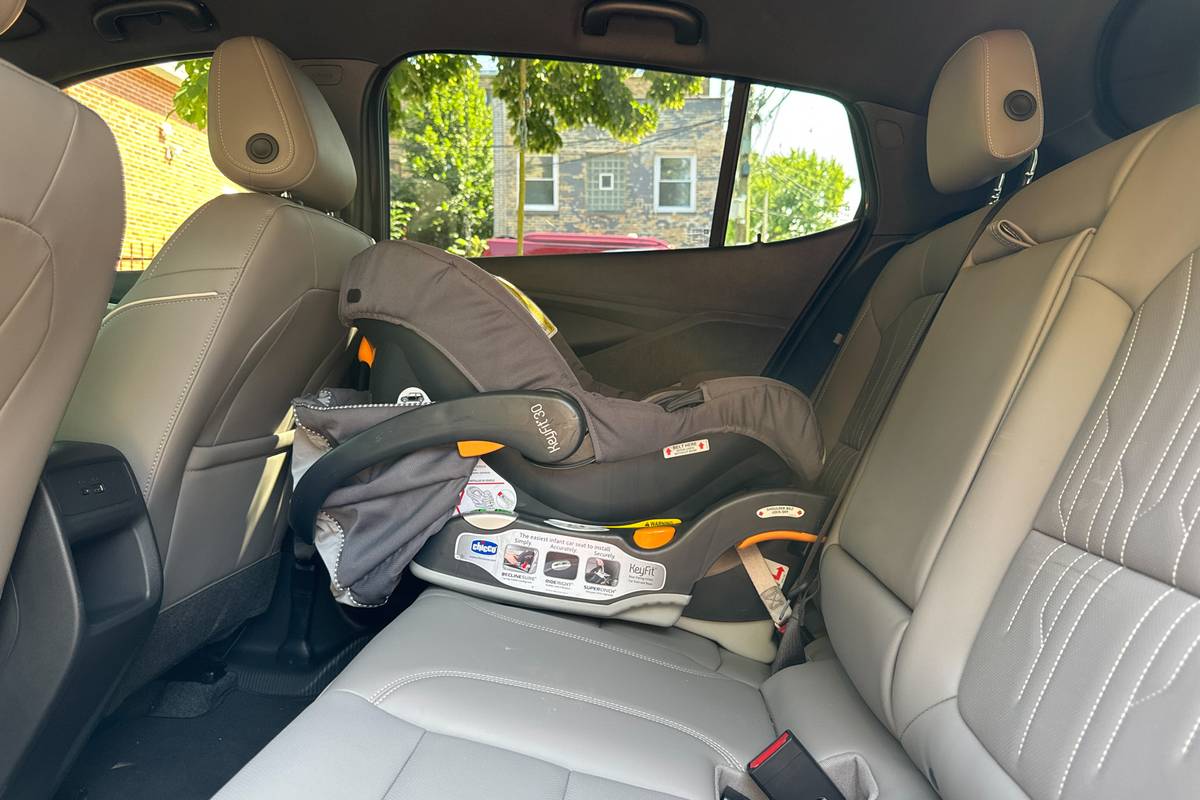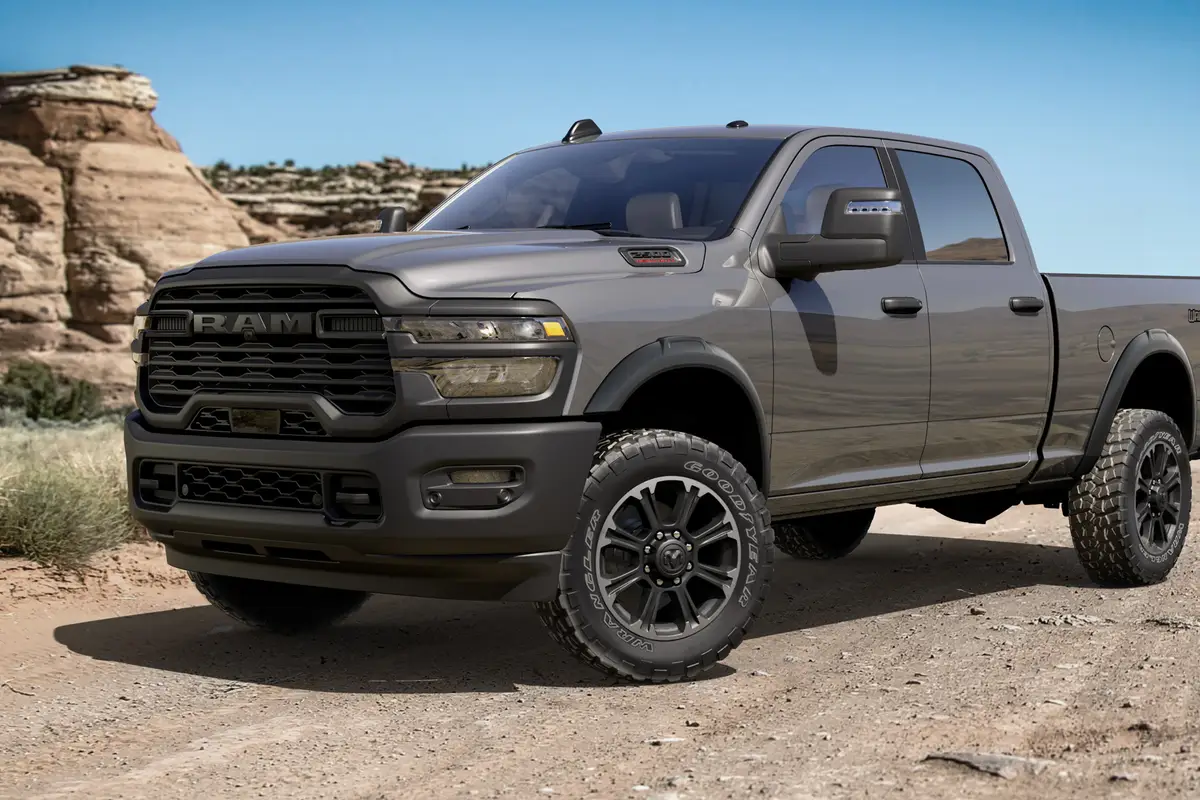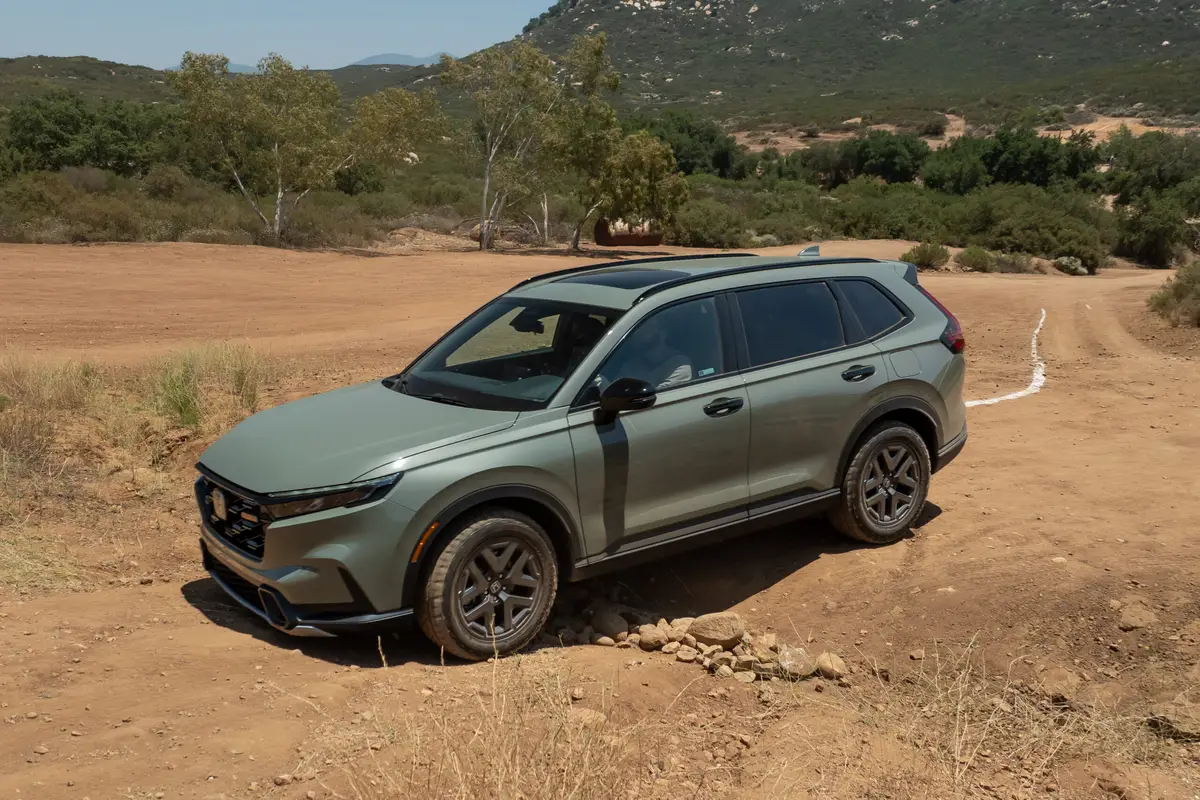chicagotribune.com's view
Despite an abundance of gingerbread, the resized and restyled ’98 Cadillac Seville is built on a very solid foundation.
However, there are so many clever gimmicks and novelties (Notebook, Sept. 7) you might overlook the engineering, such as: driver and passenger “adaptive seats” with automatic inflating/deflating bladders that conform to your body and its movement for long-distance driving comfort; a glove box large enough to hold a purse out of sight, along with holders for checkbook and tissue; a waste basket under the passenger’s seat; umbrella holders under the front seats; and the ignition moved to the instrument panel from steering column so you can travel without listening to the keys bounce off the column. Nice touches, but the 1998 Seville we tested here at a media preview is more function than frills. The days when Cadillac stood for technological innovation at General Motors have returned–with a vengeance–as evidenced by: Stabili Trak. A yaw or directional system to help the driver maintain control in bad weather or emergency maneuvers or on low-friction surfaces such as gravel. Sensors detect variances in vehicle angle and automatically apply anti-lock brakes to the right or left side of the vehicle when the front or rear end starts to swing in a corner or turn. If the rear end starts to fishtail, for example, the sensors apply the outside brakes to nudge it back into place. Stabili Trak works at speeds up to 150 m.p.h. Caddy calls it your co-pilot. Magnasteer. Sensors react to lateral acceleration as well as speed. If the on-board accelerometer senses you’re taking a corner at speed, steering effort is increased to give the driver more control. Steering effort is also increased when Stabili Trak is activated. Continuously variable road-sensing suspension. Computer sensors at each corner of the car read the road surface to automatically adjust the suspension to limit body roll, sway, pitch or dive and keep the vehicle riding flat and the driver in control. Performance algorithm shifting (PAS). Scholarly term that means computer sensors evaluate your “intentions” when driving to program transmission shifts in aggressive maneuvering as if you had a manual. Take a corner at speed, for example, and the transmission holds its gear to prevent an upshift that would upset the car’s balance causing the front or rear end to break loose. When braking into a corner, PAS downshifts. PAS selects the right gear to increase or decrease the available torque to enter and exit the corner smoothly while maintaining control. Limp-home Northstar V-8. An engine known for starter interrupt, which disengages the starter if you accidentally turn the key on while the engine is idling, so you don’t get the embarrassing “grind.” Now comes more. If you lose engine coolant, which would strand you, it will keep running safely for up to 50 miles by selectively shutting down fuel to four cylinders and pumping cool air into them instead. It then alternates the process with the other four cylinders.
Complementing the computerized suspension, steering and stability systems are road-hugging 16-inch Goodyear tires (larger p235 for ’98 versus p225 in ’97) speed rated at 130 miles per hour. An optional 150-m.p.h. high-performance tire is also available on the STS. The SLS features a softer-construction 16-inch touring radial speed rated at 112 m.p.h.
With all the above systems, plus dual front and side air bags, four-wheel ABS and full-time traction control, tell anyone who says Volvo epitomizes safety in a car that Seville will run circles around the import from the land of pickled herring.
Safety doesn’t simply mean crash survival, it also means crash avoidance. And if ever a car was built to avoid such run-ins, Seville is the machine.
The beauty of the technology is that itr turns Cadillac to the role of innovator, and all GM division swill get the systems or versions of them. To keep up, the competition will have to do the same.
Other things you’ll enjoy about the ’98 STS include the absence of bumper guards, those big, black, bulky protectors that allowed the careless to parallel park using the Braille method. If you must ram another car to park, you belong in a Hyundai, not a Seville.
Also, the doors open very wide (trunk lid, too) for easy entry and exit, though rear-seat occupants are penalized. The front seat belts have been moved from the roof pillar to the side of the front seats. So when the seat moves, the belt does, too. The seat also houses the side air bags (they pop out to form a barrier between the door and the driver’s/passenger’s chest). With so much inside, the seat is bulky and rear passengers find it a barrier when exiting.
And rear-seat occupants must lean their noggins back for full headroom. Cadillac also boasts three-across seating in back–but only if two of those People are nicknamed Slim.
Other noteworthy items: the hood is sloped more for better down-the-road visibility (no hood ornament for thieves to collect); sideview mirrors are larger; plastic rocker panel and body-side moldings protect against nitwits who slam their doors onto yours; a driver’s information system gives readings on everything from outside temperature to tire pressure and battery/oil life remaining, though the letters are about the size of those on the last line of an eye chart.
Also, radio and temperature controls are in the steering wheel; leather seats have soft, perforated, comfortable hides that aren’t as slippery (or hot/cold) as solid leather covers; and roof lights are recessed for a cleaner look and to keep the reading lamp for the left passenger in back from bothering the right passenger.
Instrument panel controls float 3D style for vivid reading, and at the push of a button, all dash lights except the digital speedometer can be turned off at night; the battery is under the rear seat and not exposed to temperature extremes under the hood, but battery terminals are under the hood should you need a jump; curved fan blades dramatically reduce under-hood noise filtering into the passenger cabin.
You’ll also find 26 storage compartments scattered throughout the car; fuel filler door and deck lid release buttons conveniently located in the instrument panel; and what’s called an RDS radio system that allows you to program the radio to pick up jazz, country-western or rock ‘n’ roll (the latter by ’60s, ’70s, or ’80s classification) stations or talk/weather stations or deejays by pressing a button. The button also will summon the names of the last three tunes played and interrupt when a weather bulletin is issued.
Basically, all you have to do to enjoy a Seville STS is turn on the key and point–and every so ofte n fill the tank.
We spent more time in the STS than SLS, one reason being that suspension and tires on the SLS are more in keeping with the older Cadillac traditionalist who’s more concerned with traveling from Chicago to Orlando for the winter without getting jostled.
The STS gets the 300-horsepower version of the 4.6-liter V-8 (275-h.p. in the SLS) as well as a body-color grille (silver in SLS), daytime running lamps, PAS and adaptive seating in leather ($1,000 option available only on STS for ’98; in 1999 they’ll be standard in STS, optional in SLS.) To save money, neither offers the power pull-down deck lid feature anymore.
STS steering is firmer, handling more predictable, road twists and turns taken quicker and tighter.
Using the Oldsmobile Aurora platform means Seville is built on a 1-inch-longer wheelbase but is 3 inches shorter overall (yet still holds at least two sets of golf clubs in the trunk). The longer wheelbase and 2-inch ider track improve ride and handling.
With a sensible size, abundant tech and ample novelty items, however, Seville makes the larger DeVille sedan look frumpy.
Neither the STS nor the SLS have been priced; Caddy officials say the STS will be about $45,000 equipped, the SLS about $42,000.
The Eldorado coupe will be resized or restyled for 1999 and will come off the Aurora platform. And it looks like Caddy will offer a convertible, too. After Eldo, DeVille gets a remake for 2000.
>> 1998 Seville STS sedan Wheelbase: 112.2 inches Length: 200.9 inches Engine: 4.6-liter, 300-h.p. V-8 Transmission: 4-speed automatic EPA mileage: 17 m.p.g. city/26 m.p.g. highway Base price: Not available. Estimated $45,000; $41,000 for SLS. Price as tested: Not available Pluses: Redesign off Oldsmobile Aurora platform. Traditional Caddy look, but less bulky. Wealth of technology?Stabili Trak, road-sensing suspension, speed-sensing gearing in corners, adaptive seating for long-distance comfort, On Star with on-board diagnostic testing, front and side air bags, ABS, traction control and lots of novelty items such as glove box that holds purse. Minuses: Small lettering on controls. Can rattles in cupholder. Rear-seat headroom a tad tight. Exit from rear seat could put you in contact with door hinge. >>
Latest news



